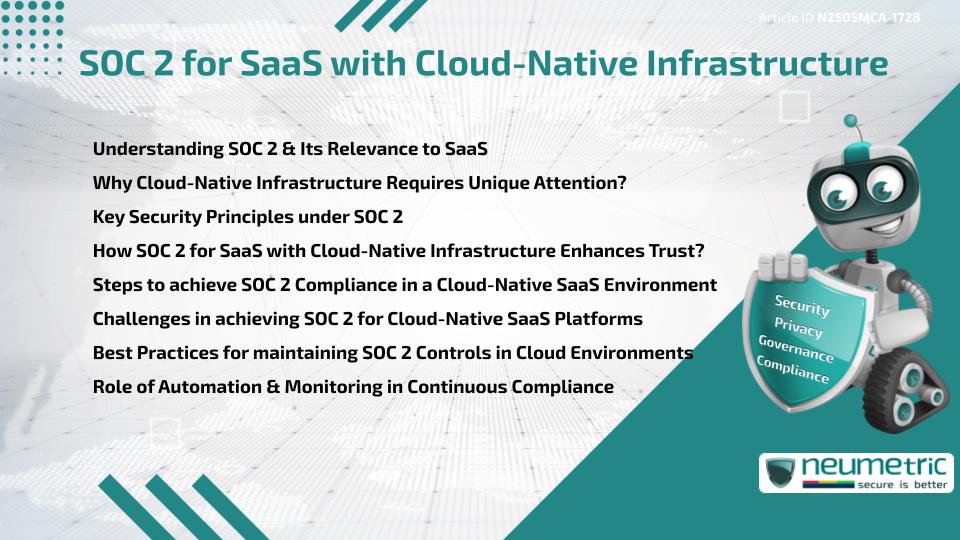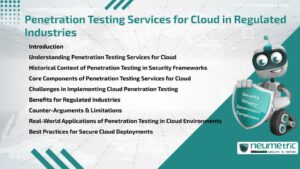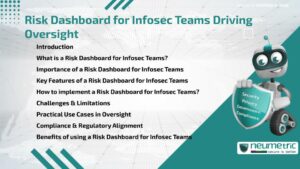Table of Contents
ToggleIntroduction
Cloud-native architecture has revolutionised how Software-as-a-Service [SaaS] platforms are built & operated. As companies increasingly adopt microservices, containers & serverless computing, the demand for robust Data Security, Availability & Privacy grows significantly. Achieving SOC 2 for SaaS with cloud-native infrastructure is not just a Compliance checkbox — it is a strategic move to build Customer Trust & operational Integrity.
This article explores the unique aspects of SOC 2 for SaaS with cloud-native infrastructure, covering its benefits, challenges & essential steps to meet the Trust Services Criteria.
Understanding SOC 2 & Its Relevance to SaaS
SOC 2, developed by the American Institute of Certified Public Accountants [AICPA], serves as a recognised framework for assessing the security practices of service organisations. It relies on five Trust Services Criteria: Security, Availability, Processing Integrity, Confidentiality & Privacy.
For SaaS Providers, SOC 2 Compliance acts as a validation of their internal controls. When paired with cloud-native infrastructure, this Compliance ensures that elastic scaling, container orchestration & continuous deployment do not compromise Data Security.
Learn more about SOC 2 here.
Why Cloud-Native Infrastructure Requires Unique Attention?
Cloud-native infrastructure is inherently dynamic. Unlike traditional monolithic systems, cloud-native environments use:
- Containers that start & stop rapidly
- Microservices communicating across distributed systems
- Infrastructure-as-Code [IaC] for provisioning resources
This fluid environment can make auditing & control enforcement more complex. Therefore, achieving SOC 2 for SaaS with cloud-native infrastructure means adapting Security Policies to dynamic assets while maintaining consistency & Audit readiness.
Key Security Principles under SOC 2
SOC 2 revolves around five key criteria, each carrying unique implications in a cloud-native context:
- Security: Protecting systems from unauthorised access, especially with ephemeral containers & remote access.
- Availability: Ensuring infrastructure is resilient & can recover from failures quickly.
- Processing Integrity: Validating that processes behave as expected across continuous integration pipelines.
- Confidentiality: Securing sensitive Customer Data across multiple microservices.
- Privacy: Adhering to Privacy obligations while leveraging Third Party APIs or data stores.
How SOC 2 for SaaS with Cloud-Native Infrastructure Enhances Trust?
With customers becoming more cautious about Data Privacy, SOC 2 reports provide verifiable assurance. When combined with cloud-native architecture, SOC 2 allows organisations to:
- Demonstrate commitment to secure operations
- Reduce procurement friction with enterprise buyers
- Streamline vendor due diligence processes
This boosts credibility with regulators, investors & partners — an invaluable asset in highly competitive markets.
Steps to achieve SOC 2 Compliance in a Cloud-Native SaaS Environment
SOC 2 Compliance should be viewed as an ongoing process rather than a single event. Here is a simplified process:
- Gap Assessment: Evaluate existing security measures against the expectations of SOC 2.
- Define Control Objectives: Align controls to cloud-native technologies like Kubernetes, CI/CD pipelines & IAM.
- Implement Tools & Policies: Use logging, monitoring & IaC scanning tools.
- Document Everything: Maintain change logs, incident reports & control descriptions.
- Choose the Right Auditor: Opt for one with expertise in assessing cloud-native infrastructure.
- Undergo Audit: Choose between a Type I Audit (snapshot in time) or a Type II Audit (evaluated over a duration).
Challenges in achieving SOC 2 for Cloud-Native SaaS Platforms
While cloud-native provides flexibility & speed, it also introduces complexity in achieving Compliance:
- Ephemeral Resources: Difficult to monitor due to short lifespans.
- Configuration Drift: Manual changes can undo IaC-based security settings.
- Log Management: High volume of logs from distributed components.
- Tool Sprawl: Multiple tools for deployment, monitoring & security increase overhead.
Overcoming these requires integration, automation & clear Governance.
Best Practices for maintaining SOC 2 Controls in Cloud Environments
To keep your SOC 2 Compliance sustainable:
- Automate Control Checks: Use policy-as-code to prevent misconfigurations.
- Centralise Monitoring: Aggregate logs & metrics across services.
- Enforce Least Privilege: Review IAM Policies regularly.
- Conduct Regular Reviews: Test Business Continuity, Incident Response & backup plans quarterly.
These practices ensure that your controls remain effective as your SaaS evolves.
Role of Automation & Monitoring in Continuous Compliance
Continuous deployment demands continuous Compliance. Automation can bridge the gap by:
- Validating configurations pre-deployment
- Monitoring runtime environments for drift
- Sending alerts when controls are violated
Real-time visibility builds confidence in control adherence without slowing down development.
Takeaways
- SOC 2 for SaaS with cloud-native infrastructure is essential for securing dynamic environments.
- Adapting SOC 2 controls to microservices, containers & IaC is critical.
- Automation & monitoring are key to continuous Compliance.
- Despite its challenges, SOC 2 enables trust, credibility & operational maturity.
- Choose the right tools & processes to align with both Compliance & business goals.
FAQ
What is the main goal of SOC 2 for SaaS with cloud-native infrastructure?
It confirms that a SaaS provider has established robust security & operational measures designed specifically for cloud-native environments.
How does cloud-native infrastructure affect SOC 2 Compliance?
It introduces complexity due to dynamic resources, which require adaptive controls & real-time monitoring to meet Compliance Requirements.
Do all SaaS companies need SOC 2 Certification?
While not mandatory, SOC 2 is highly recommended for SaaS Providers working with enterprise clients or handling Sensitive Data.
How do SOC 2 Type I & Type II reports differ?
Type I assesses controls at a point in time, while Type II examines their effectiveness over a period (typically three to twelve months).
Can automation help in SOC 2 for SaaS with cloud-native infrastructure?
Yes, automation helps maintain uniform control enforcement, minimises human mistakes & streamlines the process of collecting evidence for audits.
Is Infrastructure-as-Code important in SOC 2 Compliance?
Absolutely. IaC ensures that environments are reproducible, traceable & aligned with predefined Security Policies.
How often should SOC 2 controls be reviewed in a cloud-native setup?
Controls should be reviewed at least quarterly or whenever significant architectural changes occur in the SaaS platform.
What are common pitfalls during SOC 2 audits?
Inconsistent documentation, lack of monitoring & insufficient evidence of control enforcement are common issues.
Need help?
Neumetric provides organisations the necessary help to achieve their Cybersecurity, Compliance, Governance, Privacy, Certifications & Pentesting goals.
Organisations & Businesses, specifically those which provide SaaS & AI Solutions, usually need a Cybersecurity Partner for meeting & maintaining the ongoing Security & Privacy needs & requirements of their Clients & Customers.
SOC 2, ISO 27001, ISO 42001, NIST, HIPAA, HECVAT, EU GDPR are some of the Frameworks that are served by Fusion – a centralised, automated, AI-enabled SaaS Solution created & managed by Neumetric.
Reach out to us!





